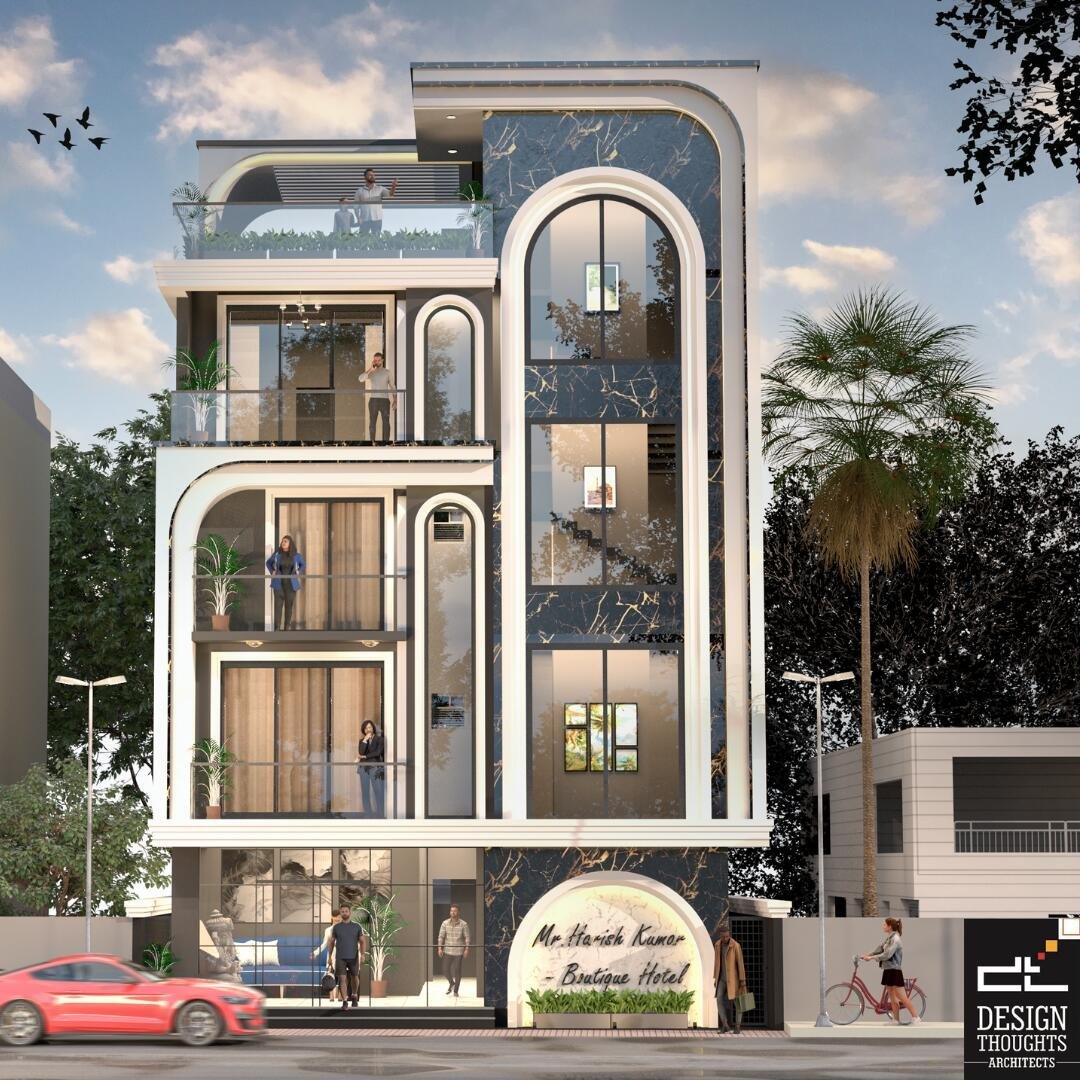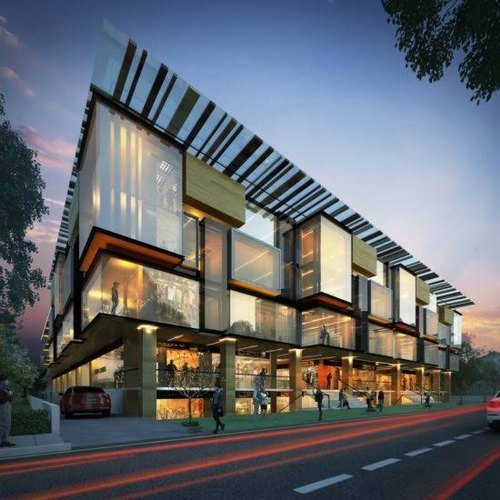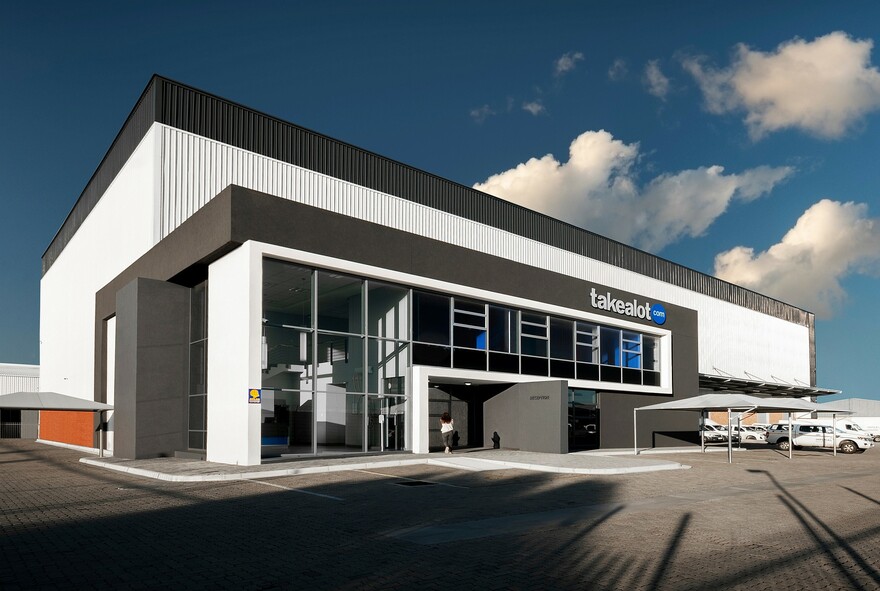Exactly How Commercial Architects Can Transform Your Service Space With Specialist Design Solutions
Commercial architects play an essential duty in reshaping organization environments. Their knowledge in style can significantly improve both capability and looks. By producing areas that reflect a brand's identity, they improve functional efficiency and employee complete satisfaction. The effect of their job extends past plain look. Understanding the nuances of cooperation and sustainability can lead to transformative outcomes. What specific aspects make these transformations successful?
Comprehending the Function of Commercial Architects
Commercial architects play a necessary duty fit company settings that are both practical and cosmetically pleasing. They concentrate on designing rooms customized to the details needs of services, making sure that every square foot is used efficiently. These professionals integrate elements such as spatial layout, lighting, and products to improve efficiency and worker well-being. By teaming up with customers, industrial architects gather understandings right into operational requirements and brand identity, converting these into innovative designs.Additionally, they browse complicated building ordinance and zoning legislations, making sure compliance while maximizing layout capacity. Their knowledge includes sustainability methods, promoting power efficiency and eco friendly products in their jobs. With their imaginative vision and technological knowledge, industrial architects not only create attractive spaces yet additionally foster settings that advertise partnership and growth. Ultimately, their payments greatly impact the general success and picture of a company.
Benefits of Expert Layout Providers

Customizing Rooms to Your Brand Identification
Tailoring spaces to a brand name's identification is crucial for sharing its core worths and objective. Commercial architects play an essential function in boosting a service's aesthetic identification via thoughtful design choices. By lining up building elements with brand principles, companies can create environments that reverberate with customers and employees alike.
Mirroring Brand Worths
Just how can a properly designed room personify a company's core worths? Commercial architects play a crucial duty fit settings that resonate with a brand's identity. By incorporating aspects such as color pattern, materials, and layouts, they develop rooms that show the essence of business. As an example, a tech firm may choose open layouts and modern home furnishings to convey development and partnership, while a luxury brand name may select elegant coatings and intimate rooms to stimulate exclusivity and class. Thoughtful style not only improves performance yet likewise cultivates a strong link between staff members, clients, and the brand. Eventually, a well-crafted environment functions as a concrete depiction of a business's goal and vision, strengthening its worths at every touchpoint.
Enhancing Aesthetic Identification
What elements can properly elevate a brand name's aesthetic identity within an industrial space? Commercial architects play a critical duty in integrating design attributes that reverberate with a business's values. Shade schemes, typography, and materials can be purposefully chosen to mirror brand values while ensuring aesthetic charm. Furthermore, incorporating logo designs and brand imagery right into the style can create a cohesive visual story. Lighting style can better enhance the ambience, leading customer perceptions and experiences (commercial architects). Design and furnishings choices ought to line up with the brand name's personality, whether it's contemporary, conventional, or innovative. Ultimately, a properly designed business room not just brings in customers but likewise enhances brand recognition, producing an enduring impact that promotes loyalty and interaction
Enhancing Performance and Performance
Enhancing capability and performance in business areas includes enhancing area use and creating process that simplify operations. Architects concentrate on developing formats that lessen thrown away space while helping with smooth modifications in between tasks. This strategy not only boosts productivity but additionally adds to a more natural workplace.
Optimizing Room Utilization
Reliable area application is a critical aspect in industrial style, where the design has to balance aesthetic appeals with functionality (commercial architects). Architects use different techniques to take full advantage of available square footage while making sure that each location offers a distinct objective. By examining operations, web traffic patterns, and customer needs, architects can produce layouts that boost both employee efficiency and customer experience. Multi-functional areas, useful source versatile furnishings arrangements, and maximized storage space services are necessary components in accomplishing this objective. Additionally, including natural light and open areas cultivates a more welcoming atmosphere, more raising the energy of the environment. Ultimately, efficient room usage not only boosts operational efficiency but likewise contributes favorably to the overall brand image, making it a crucial factor to consider in commercial design
Structured Process Layout
Just how can a properly designed operations change a business room right into a hub of productivity? Streamlined operations layout concentrates on optimizing the physical layout and functional processes within a service environment. By strategically organizing workstations, meeting areas, and resources, architects can get rid of unnecessary movement and boost learn this here now cooperation. This thoughtful layout minimizes distractions and promotes interaction, permitting workers to focus on their tasks a lot more effectively. On top of that, integrating technology into the workflow can further automate processes, reducing time invested in regular tasks. Consequently, companies experience improved staff member spirits and boosted outcome, creating a vibrant environment that fosters innovation. Inevitably, investing in streamlined workflow layout not only boosts performance but additionally positions a commercial room for sustainable development and success.
Promoting Collaboration Through Style
Although modern work spaces usually prioritize specific efficiency, the style of industrial spaces progressively emphasizes partnership as a key driver of innovation and group communication. Architects play an important function in developing settings that promote communication among employees. Open designs, multifunctional rooms, and strategically placed communal areas urge spontaneous discussions and brainstorming sessions.Incorporating aspects such as movable furnishings and versatile conference room allows teams to reconfigure rooms based upon their joint demands. Additionally, incorporating technology, like interactive white boards and video conferencing tools, enhances the ability to interact successfully, no matter location.Natural light and biophilic style elements additionally contribute to a more inviting atmosphere, promoting convenience and well-being, which are vital for effective team effort. By concentrating on these elements, business architects can develop vibrant atmospheres that not only enhance collaboration but additionally drive overall company success.
Sustainable Layout Practices in Commercial Style

Instance Researches: Effective Improvements by Commercial Architects
The execution of sustainable style methods has not only reshaped the approach to industrial architecture yet has likewise led to exceptional transformations in numerous company areas. One significant instance is the redesign of a technology company's headquarters, where architects integrated all-natural light and eco-friendly wall surfaces, leading to boosted worker health and performance. This improvement decreased power costs by 30% and improved the company's public image.In one more instance, a retailer undertook a complete overhaul, using redeemed materials and energy-efficient systems. This not only brought in eco-conscious consumers yet also enhanced foot website traffic by 25%. A third situation included a company office that embraced an open-plan design with adaptable workspaces, promoting cooperation amongst teams. The architects' focus on producing a vivid and adaptable environment significantly enhanced employee contentment. These case research studies exhibit just how business architects can develop impactful rooms that align with business goals and sustainability initiatives.
Regularly Asked Inquiries
Just How Much Do Commercial Style Provider Normally Price?
The price of business design solutions differs widely, generally ranging from $100 to $250 per hour. Elements influencing prices consist of task intricacy, place, and the designer's experience, making it vital for services to get thorough price quotes.
What Sorts Of Companies Benefit Most From Commercial Architects?
Various businesses, consisting of retail, hospitality, and corporate workplaces, significantly take advantage of industrial architects. These experts enhance functionality, visual appeals, and brand identity, guaranteeing areas are maximized for customer involvement and employee efficiency, eventually cultivating company development.
How much time Does a Commercial Layout Task Usually Take?
The timeline for a commercial design task normally ranges from a number of weeks to a number of months. Factors affecting period consist of task intricacy, governing approvals, and collaboration among stakeholders, every one of which can impact total completion time.
Can I Employ a Commercial Designer for Renovations Just?
Yes, working with an industrial architect for remodellings is viable. Numerous architects concentrate on renovation jobs, giving experience in optimizing existing areas while adhering to guidelines and boosting functionality, appearances, and overall value of business setting.
What Qualifications Should I Search for in a Business Engineer?

Comments on “A Practical Look at commercial architects and Their Services”